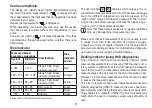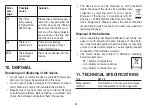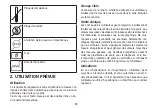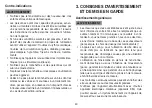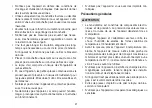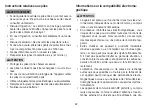
31
Cardiac arrhythmia
The device can identify heart rhythm abnormalities during
the blood pressure measurement. If
is displayed after
the measurement, this indicates that an irregularity has been
detected in your pulse.
Repeat the measurement if
is displayed.
When assessing your blood pressure, only use the results
that have been recorded without any irregularities in your
pulse.
Consult your doctor if
is displayed frequently. Only they
can determine, through an examination, whether there is an
abnormality.
Risk indicator
Measured blood
pressure value range
Classification
Risk
indicator
colour
Systolic
(in mmHg)
Diastolic
(in mmHg)
≥ 180
≥ 110
Stage 3 high blood
pressure (severe)
Red
160 – 179 100 – 109 Stage 2 high blood
pressure (moderate)
Orange
140 – 159 90 – 99
Stage 1 high blood
pressure (mild)
Yellow
130 – 139 85 – 89
High normal
Green
120 – 129 80 – 84
Normal
Green
< 120
< 80
Optimal
Green
Source:
The risk indicator
6
/
21
indicates which category the re-
corded blood pressure values fall into. If the measured values
are in two different categories (e.g. systolic pressure in the
“high normal” range and diastolic pressure in the “normal”
range), the risk indicator always indicates the higher range –
“high normal” in the example described.
Note that these default values are for general guidance
only, as individual blood pressures may vary.
Please note that self-measurement at home usually results
in values lower than those recorded at a doctor’s surgery.
Consult your doctor at regular intervals. Only they are able to
give you personal target values for controlled blood pressure,
particularly if you are receiving medical therapy.
Resting indicator (using HSD diagnostics)
One of the most common errors made when taking a blood
pressure measurement is not ensuring that the user’s circu-
latory system is sufficiently at rest when taking the measure-
ment. In this case, the measured systolic and diastolic blood
pressure values do not represent the blood pressure at rest.
However, it is this blood pressure at rest that should be used
to assess the measured values.
This blood pressure monitor uses integrated haemodynamic
stability diagnostics (HSD) to measure the user’s haemody-
namic stability when taking the blood pressure measurement.
This enables it to indicate whether the blood pressure was
taken when the user’s circulatory system was sufficiently at
rest.















